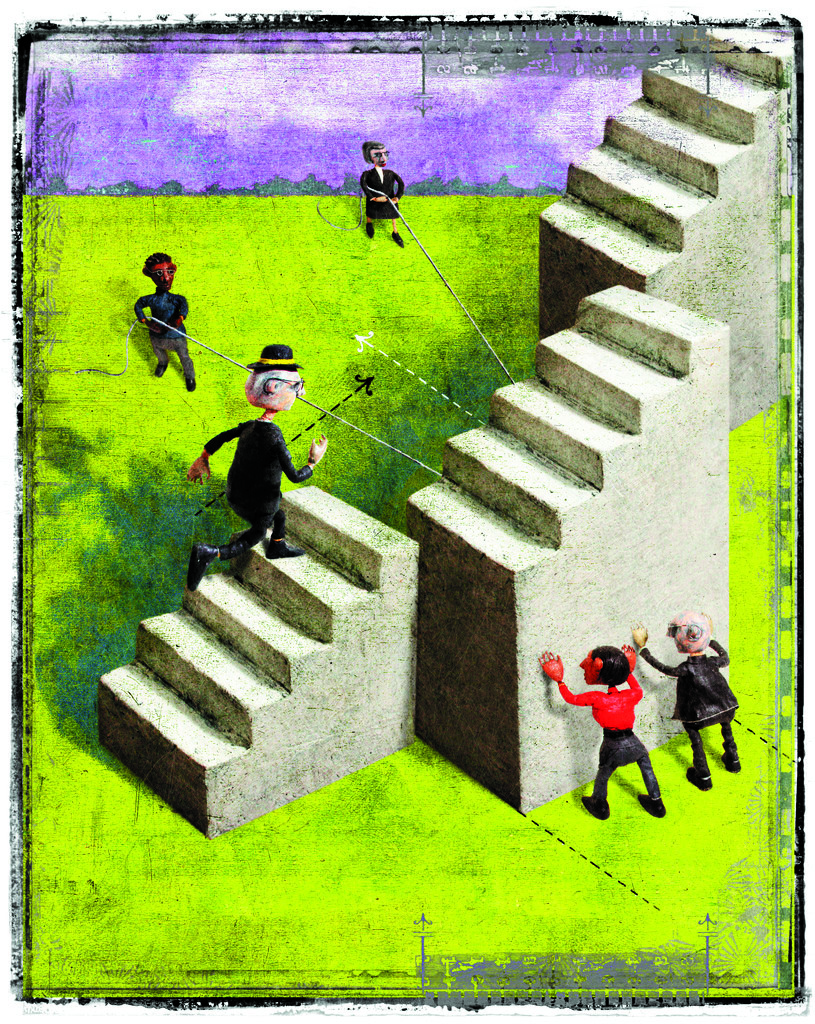Building a Better Staircase
Flights of stairs are harder to navigate as you age—tough on the knees, not to mention a falling hazard.

Current solutions like elevators and chair lifts are costly and difficult to install at home.
So researchers at Emory and Georgia Tech have reimagined stairs themselves, creating stairs that give climbers a boost. "Walking down stairs is like tapping the brakes of your car while revving the engine," says Lena Ting, a professor in the Coulter Department of Biomedical Engineering. "Your legs use a lot of energy bracing each step to avoid falling too fast. Our stairs store that energy rather than wasting it."
The spring-loaded steps reduce force on the ankles while descending, and make climbing easier on the knee. It feels, says team member Yun Seong Song, like walking down a hill with very soft soil. "It's like you have a cushion at every step. You feel low gravity."
Karen Liu, an associate professor in Georgia Tech's School of Interactive Computing, thought of the idea at a conference while considering her own active, healthy 70-year-old mother's difficulty with stairs.
Bonus: The low-power device can be placed on existing staircases and doesn't have to be permanently installed.




